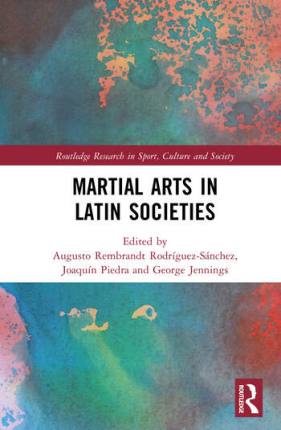Capoeira Pedagogy and Bodily Knowledge in Mexico City: Me diga quem foi seu Mestre?
Capoeira Pedagogy and Bodily Knowledge in Mexico City: Me diga quem foi seu Mestre? written by David Sebastian Contreras Islas, Erick Serna Luna and Sergio González Varela is a chapter in the book Martial Arts in Latin Societies (ed. Augusto Rembrandt Rodríguez-Sánchez, Joaquín Piedra, George Jennings).
Abstract of the chapter:
Capoeira is a Creole art from the African diaspora that integrates martial, dance, play, and ritual elements. It requires its practitioners to acquire and cultivate athletic, linguistic, musical, and expressive skills, which some authors have approached as an incarnated habitus in the sense employed by Loïc Wacquant. Such a capoeiristic habitus can be considered a form of practical and embodied knowledge that capoeiristas trade and cultivate in their communities.
The transmission of knowledge in Capoeira is framed in structured pedagogical relationships based on various legitimacy criteria. The typical form of these pedagogical relationships is the master-disciple relationship. This chapter focuses on the pedagogical relationships between disciples and the Capoeira classroom as one of the essential spaces in which these pedagogical relationships are constituted.



